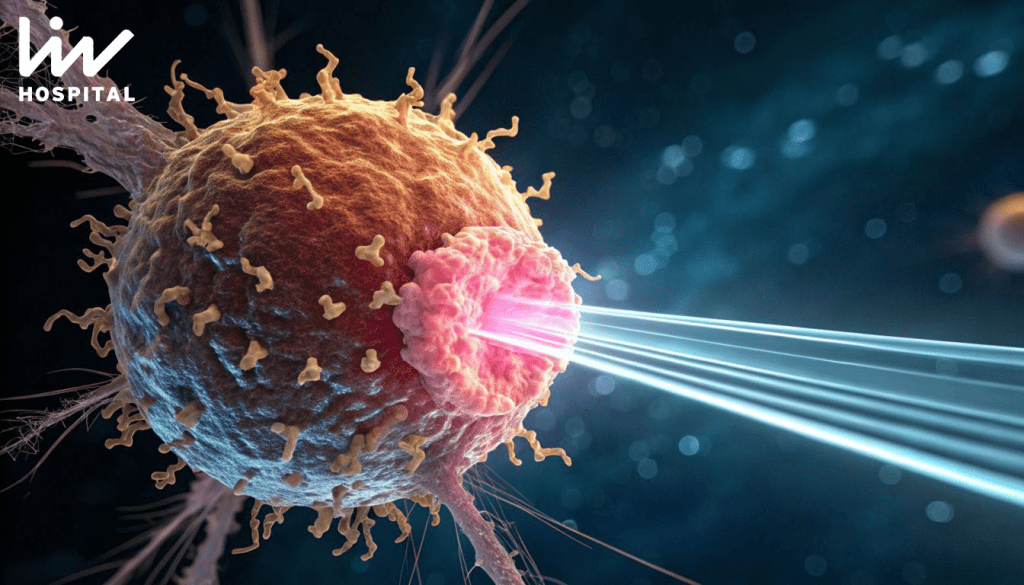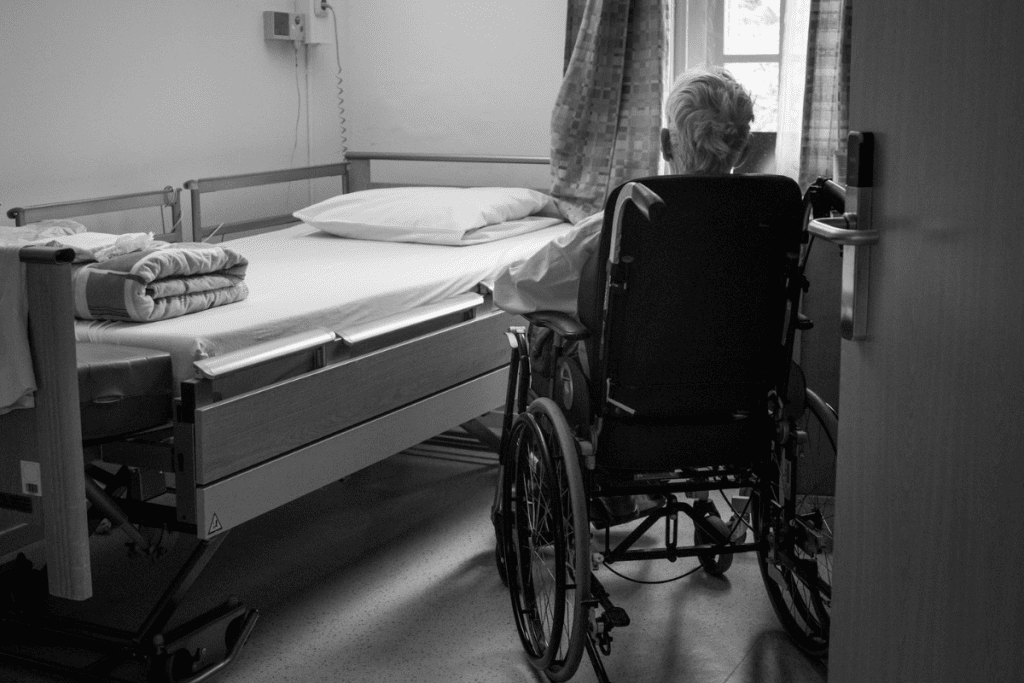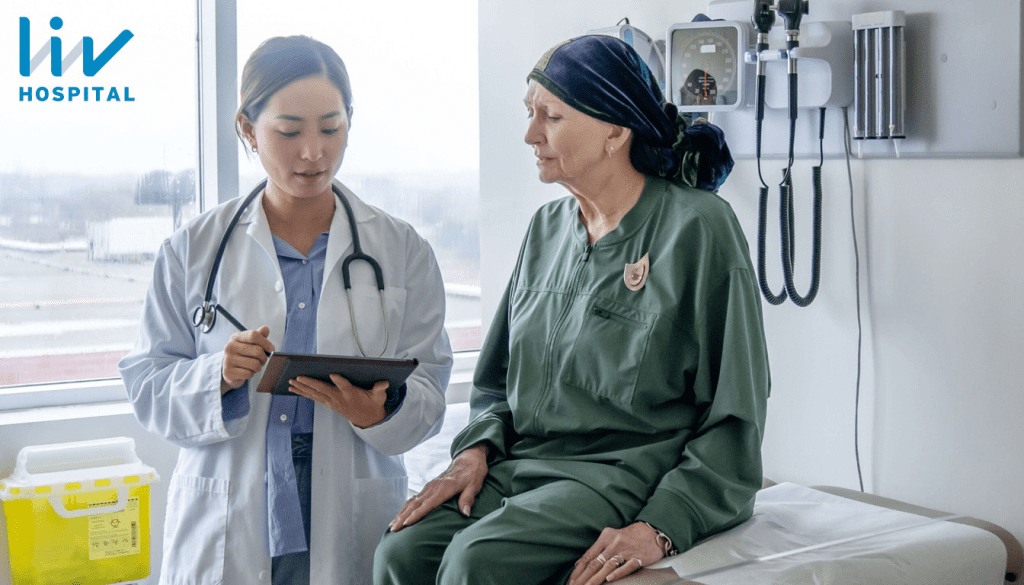Last Updated on October 20, 2025 by
Looking ahead to 2025, the world of cancer treatment is changing a lot. Over 2 million new cases are expected in the US alone. This makes the need for new solutions very urgent.
New trends are showing up, thanks to precision medicine and immunotherapy. These changes are making a big difference in how we fight cancer. New treatments and new medical treatments are being developed to face cancer’s tough challenges.

These new ideas are changing how patients do and how they feel. They bring hope to those fighting cancer. We’re working hard to give top-notch healthcare and support to patients from all over.
Cancer cases are increasing, making it key to understand the global cancer burden in 2025. The American Cancer Society predicts over 2 million new cancer cases in the US in 2025. This will lead to about 618,120 deaths. This shows we need new ways to treat and care for cancer.

The US is facing a big challenge with 2 million new cancer cases in 2025. The American Cancer Society says this rise is due to an aging population and lifestyle changes. We must keep searching for a cure for cancer through research and new treatments.
Knowing which cancers are most common is key. Cancers like breast, lung, and prostate will keep being big issues. We need to find better ways to treat and manage these cancers.
The 618,120 deaths from cancer in the US in 2025 are a harsh reality. Experts say, “Despite better treatments, cancer is a top killer worldwide.” We need to tackle cancer in many ways to lower death rates.
We must fight cancer with treatments, prevention, and early detection. Knowing why people die from cancer helps us find ways to save lives.
“The fight against cancer is a multifaceted challenge that requires continued innovation, research, and collaboration among healthcare professionals, researchers, and policymakers.”
Looking ahead to 2025, the global cancer burden is a major concern. By improving treatments and care, we can lessen cancer’s impact.
As we look ahead to 2025, oncology is changing dramatically. We’re seeing big steps forward in cancer medicine. These include new trends in precision medicine, immunotherapy, and AI diagnostics.

The old ways of treating cancer are fading away. We’re moving to more personalized and targeted treatments. This means treatments that fit each patient’s unique needs, based on their genes and cancer type.
By 2025, we expect to see new therapies in cancer that work better and cause fewer side effects. Immunotherapies will play a big role, using the body’s immune system to fight cancer.
The changes in cancer treatment for 2025 are huge compared to the past. AI-powered diagnostics will help find cancer earlier and more accurately. This is key to successful treatment.
Also, targeted molecular therapies will allow for treatments that are more precise. This means less harm to healthy cells. It’s a big step towards finding a cure for cancer.
By 2025, we’ll also see more use of combination therapy. This means using different treatments together for better results. This approach is expected to improve survival rates and quality of life for cancer patients.
Precision medicine uses advanced genetic profiling and environmental data to help cancer patients. It tailors treatments to fit each patient, making them more effective and reducing side effects.
Genetic profiling technologies have made huge strides. They help us understand the genetic mutations behind cancer. This is key to creating targeted therapies that work better and have fewer side effects.
A study on PMC shows how genetic profiling is vital in precision medicine. It helps find mutations in cancer patients that can be treated.
Genetic profiling offers many benefits:
Genetic profiling is just part of the story. Adding environmental and lifestyle data is also key. This gives a full picture of a person’s cancer risk. It helps doctors find risk factors and plan prevention.
Experts say, “Adding environmental and lifestyle data to precision medicine is a big step forward. It helps us prevent and treat cancer better.” This shows how complex cancer is and how we need to treat it in many ways.
“The future of cancer care is in using genetic, environmental, and lifestyle data for personalized treatments. These treatments meet each patient’s unique needs.”
By mixing these data types, we get a better grasp of cancer biology. This leads to more effective treatments. Precision medicine is all about this integration and will keep improving, bringing new hope to cancer care.
The year 2025 is set to change cancer treatment with new methods. We’re seeing a big shift towards more precise and personalized treatments.
For years, chemotherapy has been the main cancer treatment. But it has its downsides, like harsh side effects and not always working well. Targeted molecular therapies are now being seen as a better option. They could treat cancer more effectively with fewer side effects.
Creating these targeted therapies is a detailed process. It involves understanding the cancer’s molecular makeup. This way, doctors can tailor treatments to fit each patient’s cancer.
Targeted molecular therapies are a big step forward in cancer treatment. They aim to hit specific molecules in cancer cells without harming healthy cells. This precise approach has shown great promise in trials, leading to better results and fewer side effects for many patients.
The benefits of these therapies include:
In 2025, we’ll see even more new ways to fight cancer. Immunotherapy, which has already shown great results, will keep changing how we treat cancer. With 17 new therapies approved in 2024, the progress is clear.
“The future of cancer treatment is bright, with targeted therapies and immunotherapies leading the way. We’re committed to delivering the latest advancements to our patients.”
By using these new methods, we’re getting closer to a future where cancer is easier to manage. The work in targeted molecular therapies and beyond gives us hope for a cancer cure soon.
Immunotherapy has changed how we treat cancer, with over 150 FDA approvals. This change is big, thanks to more options in immunotherapy.
Immunotherapy is making a big impact, with over 150 FDA approvals in the last decade. In 2024, 17 new treatments got approved, showing a big increase.
2024 was a big year for immunotherapy, with 17 new treatments getting FDA approval. These new treatments are a big step forward in fighting cancer, giving hope to patients and doctors.
Key Highlights of the 17 New Therapies:
Checkpoint inhibitors are key in immunotherapy, helping in more cancer types. They help the immune system fight cancer cells better.
The effect of checkpoint inhibitors is huge. Many patients see their tumors shrink and live longer. We expect more uses for these treatments as research grows.
We aim to bring the latest in immunotherapy to patients everywhere. Our goal is to give top-notch care that uses these new treatments, helping those with cancer get the best results.
First-in-class cell therapies are changing how we treat solid tumors. We’re entering a new era in fighting cancer. New methods are being used to tackle tough cancer types.
Studies show that Tumor-Infiltrating Lymphocyte (TIL) Therapy and T-Cell Receptor (TCR) Therapy work well on solid tumors. These treatments offer hope to those who had few options before.
TIL therapy takes lymphocytes from a tumor, grows them, and puts them back in the patient. It’s shown great promise in treating solid tumors. For example, research shows it works well for melanoma patients.
This therapy is complex. It involves getting TILs from the tumor, growing them, and putting them back in the patient. It has led to strong and lasting results in some patients.
TCR therapy genetically changes T cells to find specific tumor antigens. It’s promising for treating solid tumors by boosting the immune system’s cancer-fighting power.
Improvements in TCR therapy focus on making T cells more specific and effective. Scientists are working to make TCRs better at finding tumors and less likely to harm healthy cells.
As cell therapy advances, we see better chances for patients. Using TIL and TCR therapies in treatment is a big step in fighting solid tumors.
Artificial intelligence is changing cancer care in big ways. It’s making diagnosis and treatment better. AI is helping us see cancer in new ways and treat it more effectively.
AI is making cancer detection faster and more accurate. It looks at lots of medical data, like images and patient records. This helps doctors spot things they might miss.
Key benefits of AI-powered early detection systems include:
AI is also helping pick the right treatments for patients. It looks at genetic data, medical history, and lifestyle. This helps doctors choose the best treatment for each person.
The advantages of AI-driven treatment selection include:
As AI in cancer care gets better, we’ll see even more progress. AI has the power to greatly improve cancer treatment. We’re excited to use AI to give our patients the best care possible.
Clinical trials are key in cancer research. Innovations are speeding up the creation of treatments. It’s vital to understand how trials help bring new therapies to patients.
At the forefront are adaptive trial designs and patient-centric trial approaches. These changes make trials more efficient and relevant to patients.
Adaptive trial designs are a big change from old methods. They let trials change based on new data. This can cut down on time and cost to get new treatments out.
Adaptive randomization changes who gets which treatment based on past results. This helps find effective treatments faster.
Patient-centric trials make trials easier and more convenient for patients. They use remote monitoring and digital endpoints. This reduces the hassle for patients and keeps them in the trial longer.
International hospital networks, like livhospital.com, are using new protocols. They focus on quality improvement. These networks improve the patient experience and the quality of trial data.
Studies show these new methods speed up treatment development and improve patient results. As we keep improving, we’ll see more progress in cancer care.
As we look ahead to 2025, new ways of treating cancer are emerging. These involve combining different treatments to help patients more.
Using more than one treatment isn’t new. But recent research has made it even more promising. Combination therapy uses two or more treatments to attack cancer cells better.
Pairing immunotherapy with targeted therapy is very promising. Immunotherapy boosts the immune system to fight cancer. Targeted therapy uses drugs that only hit cancer cells, protecting normal cells.
Studies show that combining these therapies can be very effective. For example, using checkpoint inhibitors with targeted therapies has shown great results in treating different cancers.
Multi-modal treatment combines surgery, chemotherapy, radiation, and immunotherapy. This approach makes treatment more personalized and effective for each patient.
“The future of cancer treatment lies in the ability to combine different therapeutic strategies effectively, providing patients with more effective and less toxic treatment options.”
To make combination therapy work best, we need to keep improving. This means always checking how treatments are doing and making changes when needed.
By using combination therapy and always improving, we can make cancer treatment better. This will help patients get the care they need.
As we explore new ways to fight cancer, treatment resistance stands as a major hurdle. Recent studies have uncovered the molecular mechanisms behind this resistance. This knowledge opens doors to novel approaches for treating cancer that keeps coming back.
Developing resistance to cancer treatments is a complex issue. It involves genetic and epigenetic changes and changes in signaling pathways. These changes help cancer cells avoid treatment effects. Knowing these mechanisms is key to finding ways to beat resistance.
Cancer cells resist treatment in many ways. They can increase drug efflux pumps, activate new signaling pathways, and change their environment. Finding out how each case develops resistance is vital for creating effective treatments.
To tackle treatment resistance, researchers are looking into novel approaches for recurrent disease. They are working on new drugs that target specific resistance mechanisms. They are also exploring new treatment methods like combination therapies and immunotherapies.
Combination therapies aim to hit multiple targets at once, making resistance less likely. Immunotherapy is also showing promise, using the immune system to fight cancer. These advances offer hope for patients facing recurrent disease.
By understanding molecular mechanisms of resistance and finding novel approaches, we can better treat cancer. This will help improve outcomes for patients and tackle this critical challenge head-on.
Looking ahead, cancer care will see big changes thanks to new treatments and ideas. Hospitals around the world are leading the way with new methods and better results. We expect to see big improvements in how we fight cancer.
New treatments and research are bringing hope for beating cancer. Experts say that combining precision medicine, immunotherapy, and AI will change cancer care. While there’s more work to do, finding a cure for cancer is getting closer.
We’re excited for the future of cancer care. We’re committed to top-notch healthcare and support for patients from abroad. Our goal is to use the latest in cancer treatment to make patients’ lives better. The future of cancer care is looking bright, and we’re ready to lead the way.
We’re seeing big changes in how we fight cancer. New methods like precision medicine, immunotherapy, and AI are changing the game. They offer hope to both patients and doctors.
Precision medicine is at the heart of personalized cancer care. It uses genetic tests and environmental data to create treatments just for each patient. This makes treatments work better and have fewer side effects.
Immunotherapy has been a huge leap forward in cancer care. In the last decade, it’s led to over 150 FDA approvals. It’s changing how we treat cancer and making patients’ lives better.
AI is becoming key in finding and treating cancer. It helps spot cancer early and tailor treatments. It also helps doctors make better choices for their patients.
Combination therapy is a new way to fight cancer. It combines different treatments to work better together. This approach is showing great promise in beating cancer.
To beat cancer, we need to understand why treatments sometimes stop working. Researchers are working hard to find new ways to keep treatments effective.
While we’re not there yet, cancer research is moving forward fast. The progress we’ve made is a big step towards a future where cancer is treatable. We’re seeing new treatments and ways to fight cancer.
The future of cancer care looks bright. New treatments and ideas will keep coming. Hospitals around the world will lead the way, making treatments better and saving more lives.
Subscribe to our e-newsletter to stay informed about the latest innovations in the world of health and exclusive offers!